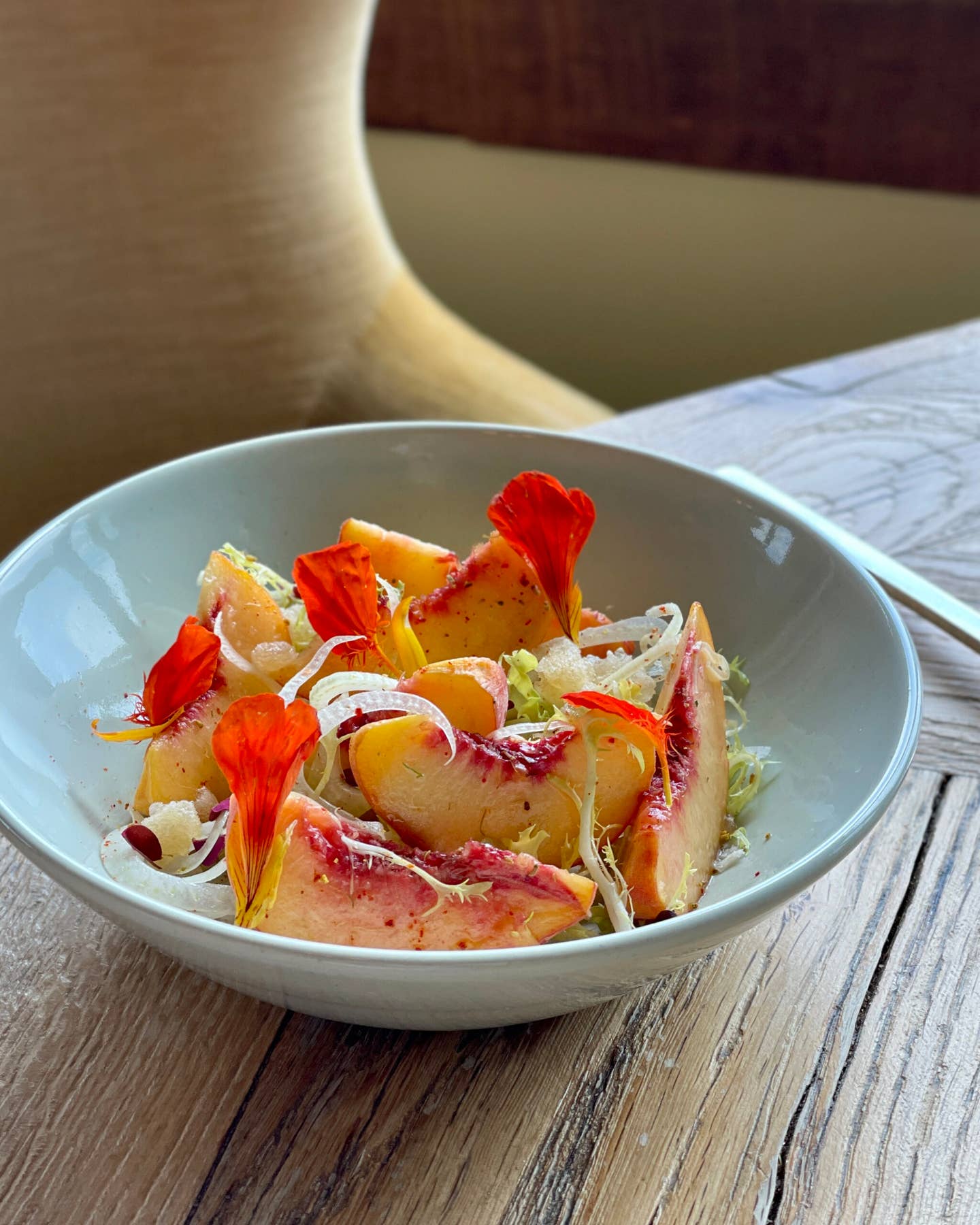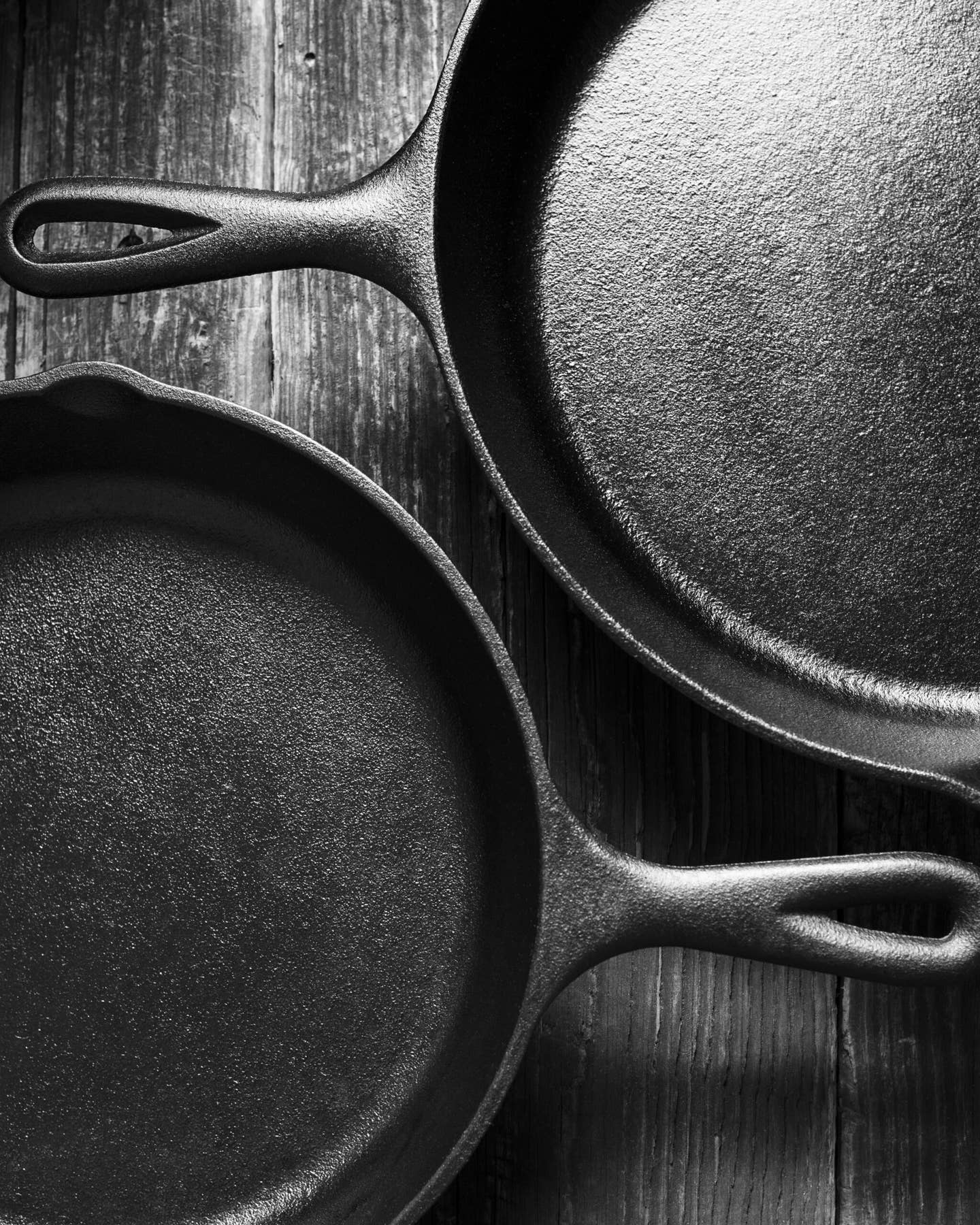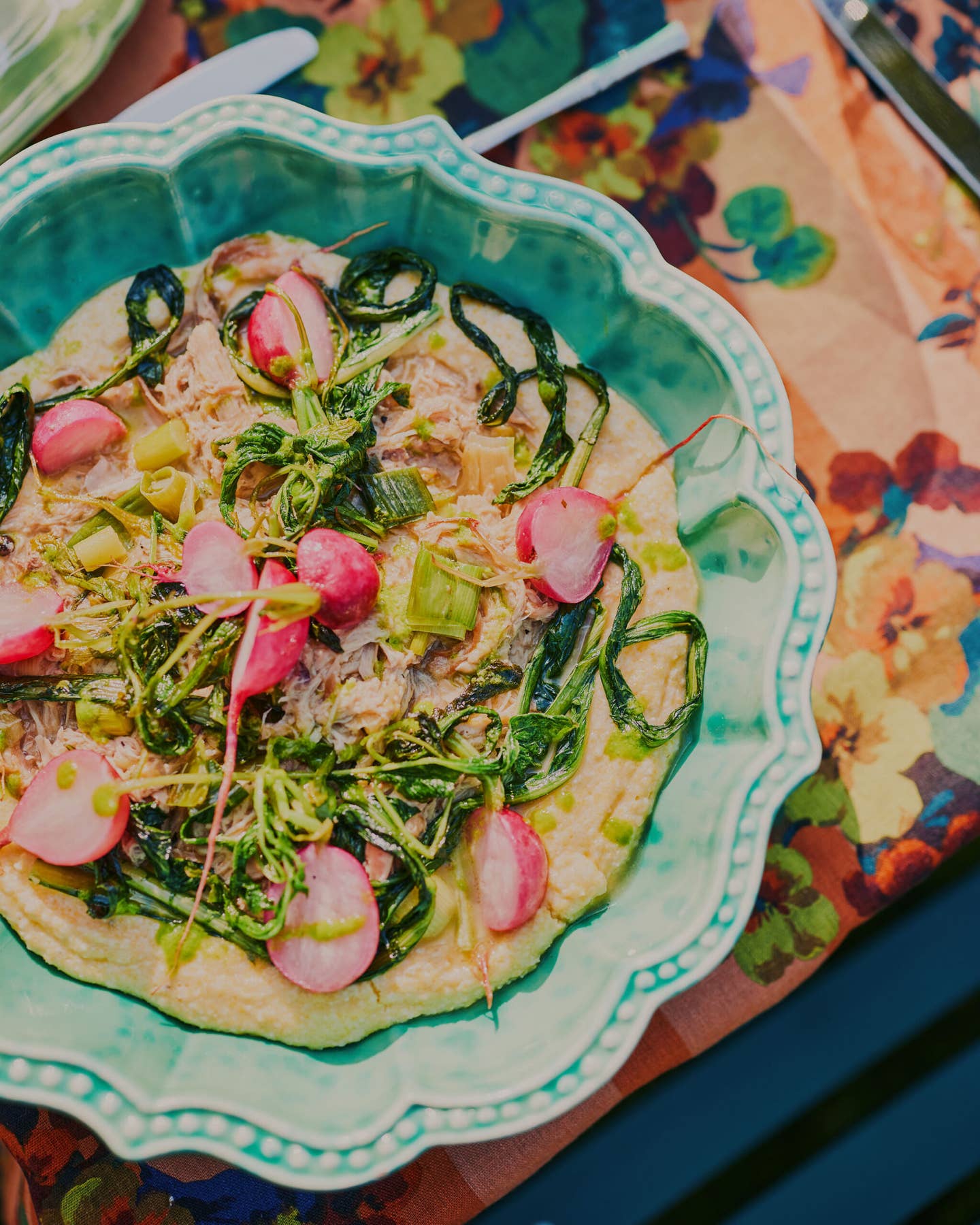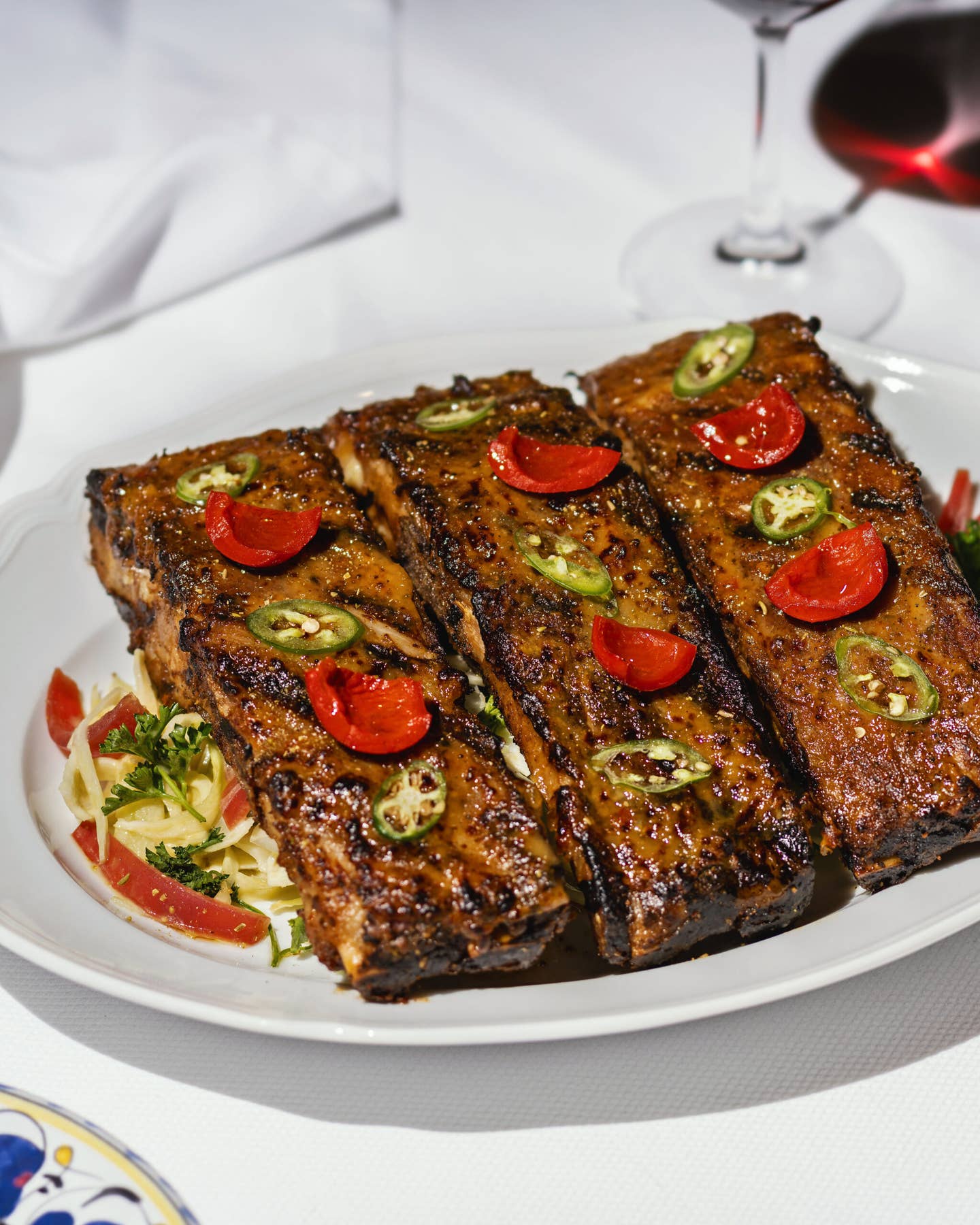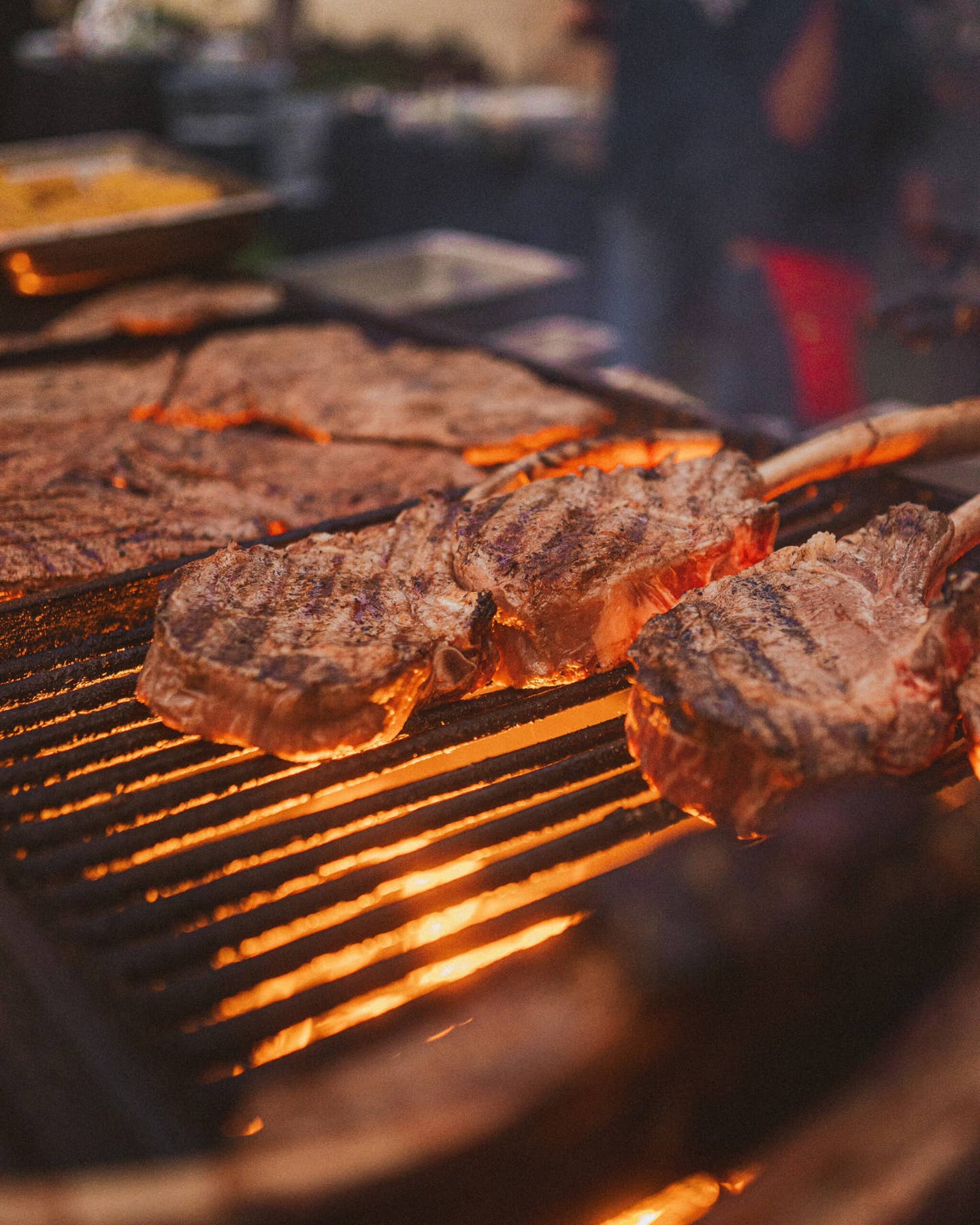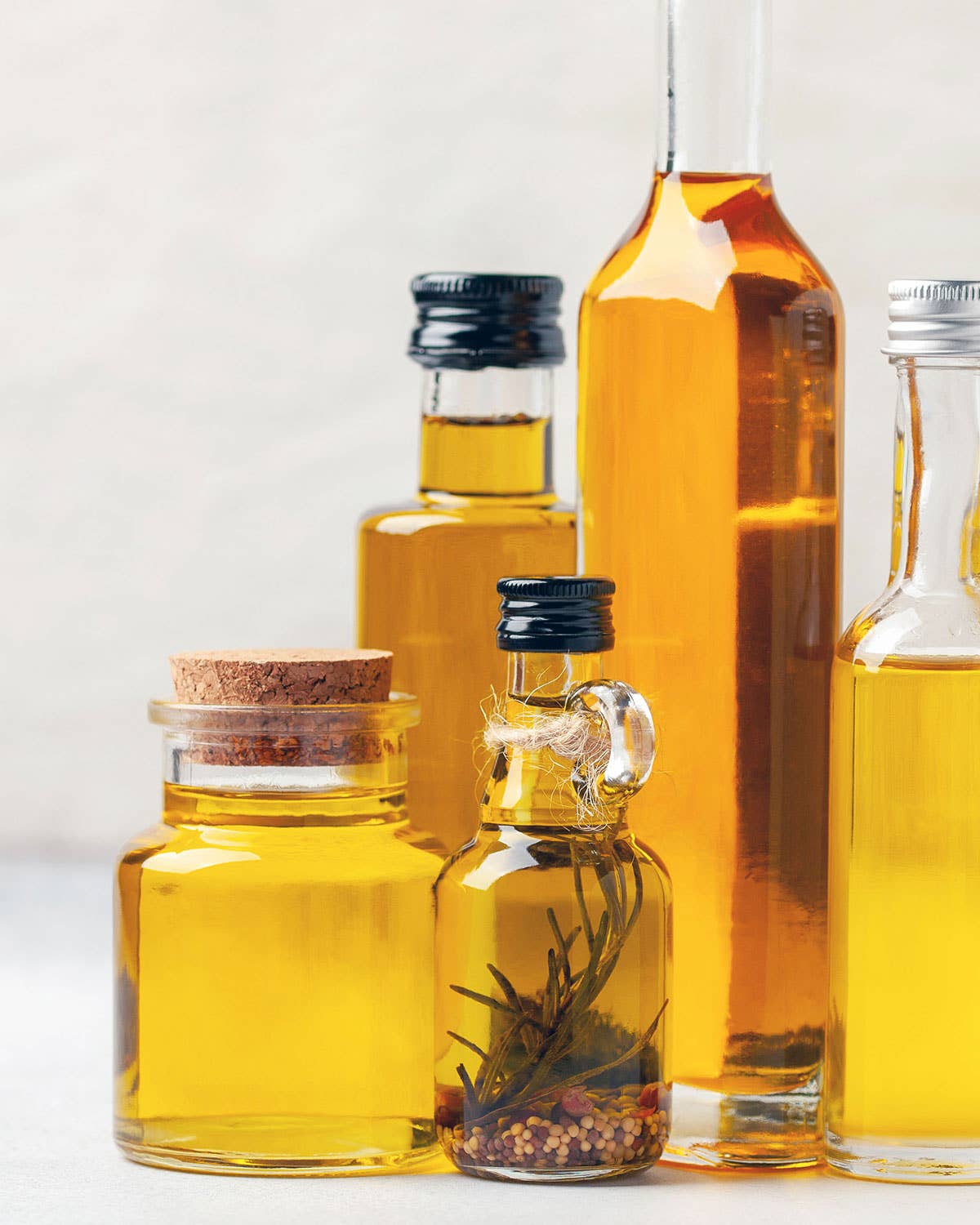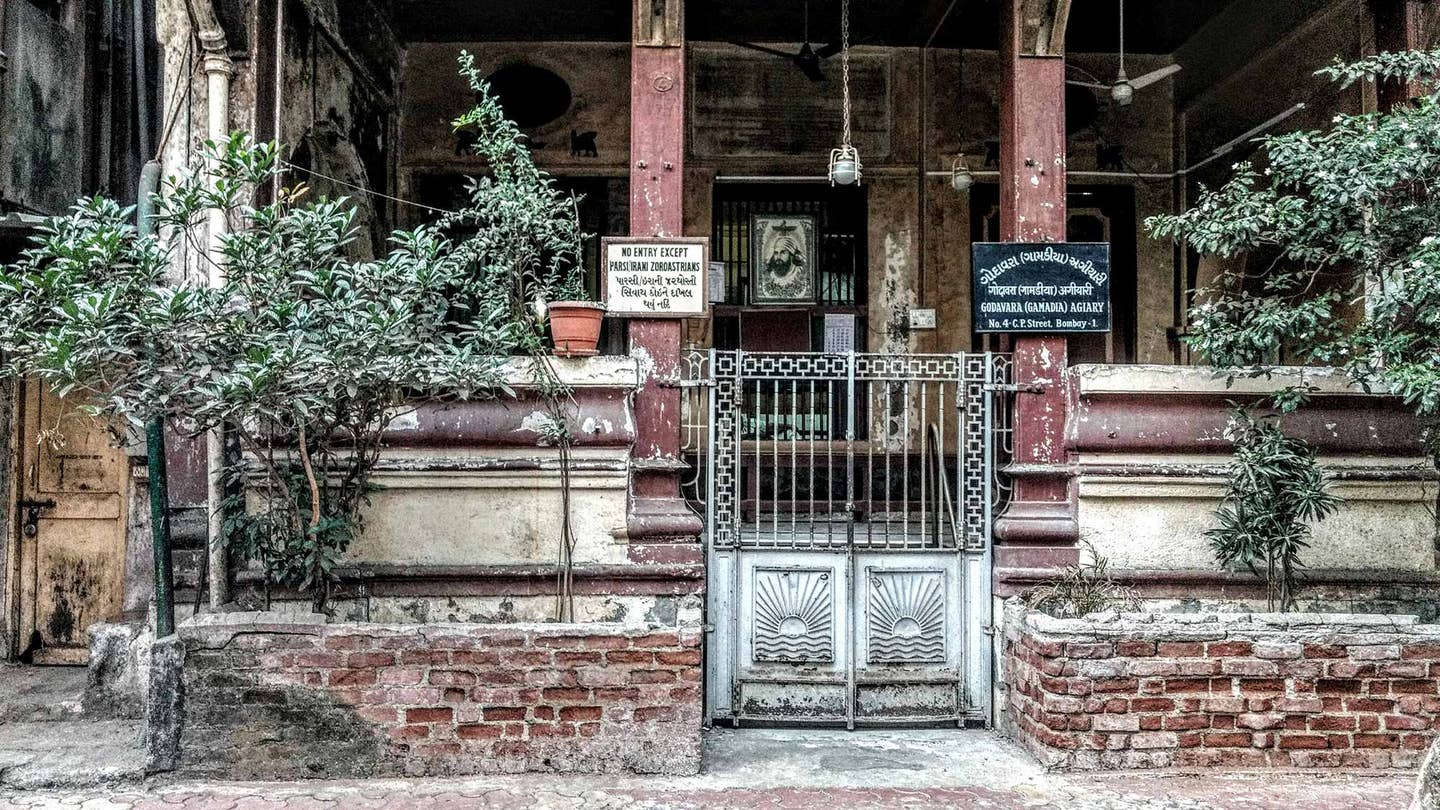
The Festive Parsi Pantry
How one Parsi Indian woman celebrates Navroze—the Persian New Year—in Mumbai, plus her top picks for stocking a traditional Parsi pantry.
Every Navroze starts out the same. I’m at the fire temple. The cacophony of the city is fading away, replaced with a carillon of prayer chants and the crackle of the holy flame. The air is gray with smoke. Devotees drop to their knees at the altar for a scurf of holy ash to be pressed to their foreheads, then turn away to lean their heads on framed pictures of the prophet. A thaal of oil lamps burns feverishly under a dimly lanterned hall. The sun spills light onto wooden window seats.
For Parsis, my tiny Indian community that traces its line to Zoroastrian (pre-Islamic) Iran, Jamshedi Navroze brings the promise of spring, a new year, and a time for the world to remake itself—a renaissance for the soul. But for greedy me, it’s mostly about the food.
Parsi cuisine stands out for its abundance of seafood, eggs, and meat, the lifeblood of our people. Most vegetables are cooked with carefree amounts of protein to sheathe the taste of the former, and there is even an entire range of dishes called “par eeda” which translates to “egg cooked over something.” On their own, vegetables are often dismissed as ghas poos, or “grassy nonsense.” Another Parsi signature is the undercurrent of sour-sweet spice that forms the base of most of our dishes. And then, of course, there’s that most-vaunted Parsi dish, dhansak, a potage of meat,vegetables, and lentils always eaten with caramelized rice. But never on Navroze, Persian New Year.
My own Navroze reveille, as regular as an Angelus bell, is malai pao, the slick of cream on top of heavy milk, scooped up with a loaf of white bakery bread; bowls of creamy rawo (semolina pudding) speckled with butter-fried raisins, pistachios, almonds, and charoli nuts; sev, vermicelli fragrant with cardamom and nutmeg; or mitthoo dahi, gently sweetened yogurt—all sugared auguries for the year ahead.
Then there’s lunch, never varying at my home: rice and butter-yellow mori dar (plain toor lentils), turreted with garlic flakes fried to a crisp and eaten with a heap of basmati rice. The classic accompaniment is prawn or fish patio, a seafood condiment bright with vinegar and chile, its gravy the color of oxblood. This is cardinal festive eating in any Parsi home, made to celebrate the highest occasions—new years, birthdays, and anniversaries. When the dinner plates are cleared, out comes the mawa ni boi, a confection shaped like fish meant to attract sweetness and blessings for the new year.
In the evening, after a long nap, the festivities continue with a party and a rambunctious Parsi play, or gahambar. At gahambars (community feasts), guests sit at long trestle tables, threads of dance music like “Chaiye Hame Zarthosti” unspooling around them. There is usually mutton pulao dar (mutton pilaf with lentils); saria (sago) crisps that fizz and crinkle as they melt on the tongue; chicken legs cowled by beaten egg froth; pomfret with green chutney, wrapped in banana leaves or dunked in vinegar-egg sauce; and sweet, dried fruit pickles. Revelers spoon it all off banana leaves, feasting until the sky darkens to a midnight blue.
As cliché as it may sound, food is the glue that binds my tiny community, which numbers fewer than 70,000. Our cuisine is webbed together by a cosmos of influences drawing from the community’s peripatetic history. Parsis are Zoroastrian Iranians, followers of what is possibly the first monotheistic religion, and one that saw divinity reflected in the purity of fire. Once founders of the mighty Parthian, Sassanian, and Achaemenian empires, later dynasties were felled in the 8th century by Arab invaders. A small band of gritty Zoroastrians took the sea route to India, beaching their boats on the shores of the western Indian state of Gujarat. In return for shelter, they relinquished the Persian language for Gujarati and dressed to local custom; our saris are still draped in the Gujarati fashion. In the 17th century, Parsis seeped through to Mumbai, where they contributed immensely to India’s vivid cultural and economic landscape.
Most Parsis have long shed Iranian customs such as setting the haft-seen table (a table arrangement of seven foods beginning with the letter S, a custom followed by Zoroastrian Iranians who migrated to India in the 19th century). Yet we are still threaded to Iran through our food—hence our predilection for meat and offal dishes and dried fruit and nuts. In the History of Bukhara, for instance, Abu Bakr Muhammad ibn Jafar Narshakhi counts 1,000 shops in the lavish bazaars of the Sasanian Empire (224–651 AD) selling everything from pistachios to spices.
Parsi dishes featuring accoutrements of the coast—seafood and coconuts—are drawn from Gujarat. Fueled by Dutch, Portuguese, and English trading communities of the 17th century, Gujarat also became an incubator for bakeries. The legendary bakeries of the city of Bharuch have long shuttered, but in Surat, the Parsi-owned Dotivala bakery still claims descendance from the Dutch bakeries of the time.
Parsi custards, stews, saas (eggy sauces), and roasts also ripple back to colonialism. Parsis took anodyne English dishes and vivified them with spice: “Saas [...] is the creation of the Parsi housewife—the origin is the bechamel sauce of the West,” writes Bhicoo Manekshaw, Parsi chef and author, in Parsi Food and Customs.
Lastly, the foods and cooking techniques of the Indian states of Goa and Maharashtra also irrigate our cuisine, a testament to the waves of immigration of Parsis to Mumbai.
Parsi food is resilient, complex, and layered, like most cuisines of the Old World, and yet, it is so often reduced to dhansak and patra ni macchi. For a community already in its gloaming, it is urgent to chronicle the richness of its culinary culture and to make it accessible to all. In sharing my list of Parsi pantry essentials, I like to think I’m doing my own small part to further this cause.
Tari (Toddy)
Neera is the sap wicked from the palmyra palm. It tastes like sweet, carbonated coconut water immediately upon extraction but deepens, sours, and ferments soon after harvest to create tari (aka toddy). In The Parsees at the Court of Akbar, J. J. Modi writes that, in the 16th century, tari was “as much known in Gujarat, as the beer of Munich is known in Europe.” Tari was so deeply entrenched in Parsi culture, and irresistible to all, that in 1570 a few priests signed a declaration stating that they wouldn’t partake of tari during certain religious ceremonies.
Even today Parsis find ways to chivvy tari into their meals somehow. We sluice it through our meat stews and yogurt curries (kadhi), poach fish in it, add it to biscuits and dumplings (popatjee), and even use it to palliate upset stomachs.
Sugarcane vinegar
Tartness runs through our cuisine, gutting and hollowing, leaving its mark. Most Parsis turn to Kolah’s dark, treacly aged sugarcane vinegar made exclusively in the Gujarati town of Navsari. Patio, fish saas, and—of course—Parsi pickles (we pickle everything from fish roe to mutton) are doused in vinegar, whose sting is often soothed by a lick of jaggery or sugar.
Dried Bombay duck
Parsis love their Bombay duck (the curiously named lizardfish that Parsis call boomla) both fresh and sun charred, its flesh shriveled into spindles. The dried version is crisp-fried or roasted, a superb accompaniment to a flagon of beer. We also fashion them into cutlets and torch them with chile powder and vinegar to make Tarapori patio, a specialty of the Parsis of Tarapore, in Gujarat.
Ginger garlic paste
A near-universal requirement across much of India, ginger-garlic paste bolsters many Parsi dishes, both as a marinade for poultry and meat and as an earthy base in many of our dishes such as goat and sheep brain cutlets and aleti paleti, stewed chicken liver and gizzards. I usually grind half a cup at a time in my mixer; it keeps for up to three weeks in the fridge.
Coconut
Coconut muscles its way into much of our food. Its freshly squeezed milk is swirled with cooked tomatoes to make kharo rus, a light, savory gravy eaten with rice. The flesh, which we traditionally excavate using a coconut scraper, is worked into chutneys and masala pastes and fashioned into sweets such as khaman na larwa, sugary coconut confections with dried fruit and cornflour.
Sali
These skin-thin fried potato matchsticks add salt and scrunch to dishes like sauced chicken and mutton (Sali marghi and Sali boti). For a quick, decadent meal, we plunk a handful into a saucepan, crack an egg over it, let it cook, then add cilantro leaves to finish.
Spice mixes
Parsi dishes are powered by a variety of spice mixes and while packaged versions are available, most Parsi home cooks make their own—naturally, every household thinks their version is the finest. These include Parsi dhansak masala, Parsi sambhar masala, Parsi garam masala, and Parsi dhana jeera.
Keep Reading
Continue to Next Story




